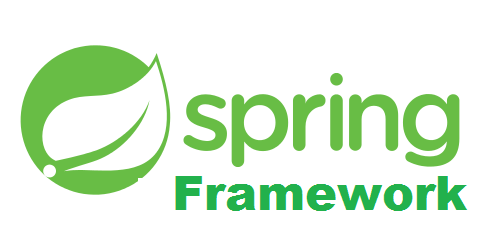Spring Core Tutorial

Welcome to the Spring Framework Tutorial! The Spring Framework is a comprehensive and widely adopted framework for building robust, scalable, and maintainable Java applications. This tutorial will guide you through all aspects of the Spring Framework, empowering you to harness its full potential in your development projects.
What is the Spring Framework?
The Spring Framework is an open-source, lightweight, and versatile framework that simplifies and accelerates the development of Java applications. It provides a holistic solution for addressing various challenges in modern software development. Key features of the Spring Framework include:
- Dependency Injection: Spring’s Inversion of Control (IoC) container simplifies the management and injection of dependencies, making your application more modular and testable.
- Aspect-Oriented Programming (AOP): Spring allows you to implement cross-cutting concerns such as logging, security, and transaction management in a modular and reusable manner.
- Data Access and Integration: Spring provides support for various data access technologies, including JDBC, JPA, and Hibernate. It also integrates seamlessly with messaging systems, like JMS, and external services.
- Transaction Management: Spring offers a robust and consistent programming model for managing transactions across various data sources.
- Web and MVC Framework: The Spring Framework includes a web module that simplifies building web applications and RESTful APIs. Spring MVC provides a flexible and powerful model-view-controller framework.
- Security: Spring Security is a widely used module for implementing authentication, authorization, and other security features in Java applications.
- Simplified Testing: Spring’s architecture encourages writing unit tests for your components, making it easier to ensure code quality.
- Extensibility: The Spring ecosystem includes various projects and extensions, such as Spring Boot for rapid application development and Spring Cloud for building microservices-based applications.
Why Learn the Spring Framework?
Mastering the Spring Framework offers several advantages for Java developers and software engineers:
- Increased Productivity: Spring simplifies many common tasks, allowing you to focus on building your application’s business logic.
- Modularity and Reusability: Dependency injection and AOP enable cleaner, modular code that can be reused across your application.
- Scalability: Spring provides tools for building scalable and enterprise-ready applications, making it a top choice for large projects.
- Industry Adoption: Spring is widely used in the industry, and knowledge of Spring is highly sought after by employers.
- Comprehensive Ecosystem: Spring’s ecosystem includes a wide range of projects and extensions for different use cases, making it suitable for various scenarios.
- Community and Support: The Spring community is active and well-supported, ensuring that you have access to resources and assistance when needed.
What You’ll Learn in This Tutorial
This Spring Framework Tutorial is designed to take you from a beginner to an advanced level in Spring. Here’s an overview of the topics we’ll cover:
- Introduction to Spring: We’ll start by exploring the core concepts of the Spring Framework, including dependency injection and the IoC container.
- Spring Configuration: You’ll learn how to configure Spring using XML and annotation-based configurations.
- Bean Scopes and Lifecycle: Understand bean scopes and lifecycle management in Spring.
- Dependency Injection: Master the art of injecting dependencies and managing component relationships.
- Aspect-Oriented Programming (AOP): Dive into AOP and learn how to handle cross-cutting concerns in your application.
- Data Access with Spring: Explore data access using JDBC, JPA, and Hibernate.
- Spring MVC: Learn to build web applications and RESTful APIs using Spring MVC.
- Spring Security: Implement security features, authentication, and authorization in your applications.
- Spring Boot: Discover Spring Boot for rapid application development and microservices.
- Testing with Spring: Explore the world of testing in Spring applications.
- Best Practices and Patterns: Throughout the tutorial, we’ll emphasize best practices and design patterns for building high-quality Spring applications.
Prerequisites
To get the most out of this Spring Framework Tutorial, you should have a basic understanding of Java programming and some familiarity with web development concepts. However, even if you’re new to these concepts, we’ll provide explanations and examples to help you grasp the fundamentals.
Who Can Benefit from This Tutorial?
This tutorial is suitable for:
- Java developers interested in building scalable and maintainable applications.
- Software engineers looking to enhance their Java skills and learn about the Spring Framework.
- Students and professionals aiming to develop enterprise-level Java applications.
- Developers working on web applications and RESTful APIs.
How to Use This Tutorial
This Spring Framework Tutorial is structured as a series of lessons, with each lesson building on the knowledge and skills you’ve acquired in previous sections. You can use this tutorial in the following ways:
- Step-by-Step Learning: Start from the beginning and work your way through each lesson to gradually build your Spring skills.
- Reference Material: Use individual lessons as quick references for specific Spring topics or issues you encounter in your projects.
- Hands-On Practice: Each lesson includes practical examples and exercises that you can follow to gain hands-on experience with Spring.
Let’s Get Started!
Now that you have a clear understanding of the Spring Framework and its benefits, it’s time to dive into the first lesson and begin your journey to mastering Spring. Whether you’re a beginner or an experienced developer, this tutorial equips you with the knowledge and skills needed to effectively leverage the Spring Framework in your Java projects. Happy learning!
Conclusion
The Spring Framework is a powerful and versatile framework for building Java applications. Learning Spring will enhance your ability to develop scalable, maintainable, and high-performance software. This tutorial covers everything from the basics to advanced topics, providing you with the knowledge and skills needed to become a proficient Spring developer. Whether you’re new to Spring or looking to deepen your expertise, this tutorial is your comprehensive guide to success.
